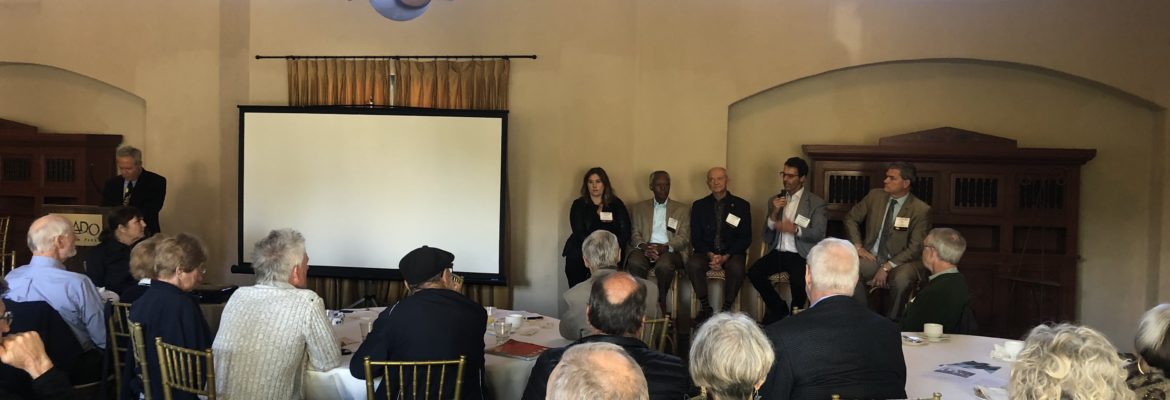Citizens Coordinate for Century 3 (C-3) convened a panel of stakeholders recently, at Balboa Park’s House of Hospitality, to discuss the future of Balboa Park in light of plans for change and challenges facing those changes.
The event’s moderator, Roger Showley, retired Union-Tribune reporter and C-3 board member, reminded the audience that the park’s 1989 master plan is 30 years old, and many projects envisioned remain to be done. After more than 150 years, many deferred maintenance issues need attention.
As the de facto people’s park in San Diego, Balboa Park has many caretakers and stakeholders, several of whom participated in the panel event, including Sarah Beckman, director of external relations, Balboa Park Conservancy; John Bolthouse, executive director, Friends of Balboa Park; Mike Kelly, president, Committee of One Hundred; David Malmuth, developer, I.D.E.A. District; and Wilbur Smith, former chair of the City of San Diego Park & Recreation Board.
Bolthouse pointed out that while the City of San Diego has a maintenance budget of approximately $350 million each year, Balboa Park does not have a dedicated, reliable source of revenue. He and others at Friends of Balboa Park are advocating for a dedicated allocation to address a large list of projects he shared with the audience.
Among them were several major initiatives, including the south Palisades Plaza reclamation, the new Comic Con Museum, restoration and reprogramming of Starlight Bowl and restoration of the Botanical Building. Kelly added that The Committee of One Hundred envisions restoring the Palisades Plaza to how it looked in 1935.
Smith hopes that to accomplish all of these goals, the City of San Diego will allow a design review committee specific to parks and recreation to form again.
“Our parks were better designed and better utilized,” he said, referring to the committee’s previous existence. “We need to move park projects back into the park and recreation department. Public works is more civil engineer oriented, and they try to churn projects out as quick as possible. Good design gets lost.”
Beckman agreed and stressed the importance of an overarching placemaking perspective for Balboa Park’s future. “Placemaking inspires people to reimagine public spaces as the heart of a community,” she said. Two of the actionable items she outlined included creating connections throughout the park and making a place for locals first, because “tourists will follow.”
“The city talks about Balboa Park as the heart of the city, but we don’t treat it that way,” said Malmuth. “It’s not that the city doesn’t have heart for the park, it’s that we don’t have the people or the financial resources to do what we need to do.”
To that point, he proposed three scenarios for the park’s future:
- The park stays an uncommercialized city asset, as it is now,
- some commercialization is introduced, or
- the park includes revenue producing assets, like Bryant park in New York where the tenant mix includes some commercial businesses that pay rent to help cover park costs.
“Next year, we need to get candidates on the ballot who have a plan for Balboa Park,” he concluded.
About C-3
Since 1961, Citizens Coordinate for Century 3 (C-3) has sought and successfully advocated for the highest standards in urban design, community planning and access to public open space. As a member-supported, nonprofit organization, we bring together residents and professionals to jointly craft solutions to the challenges we face in our city and region. http://c3sandiego.org.

